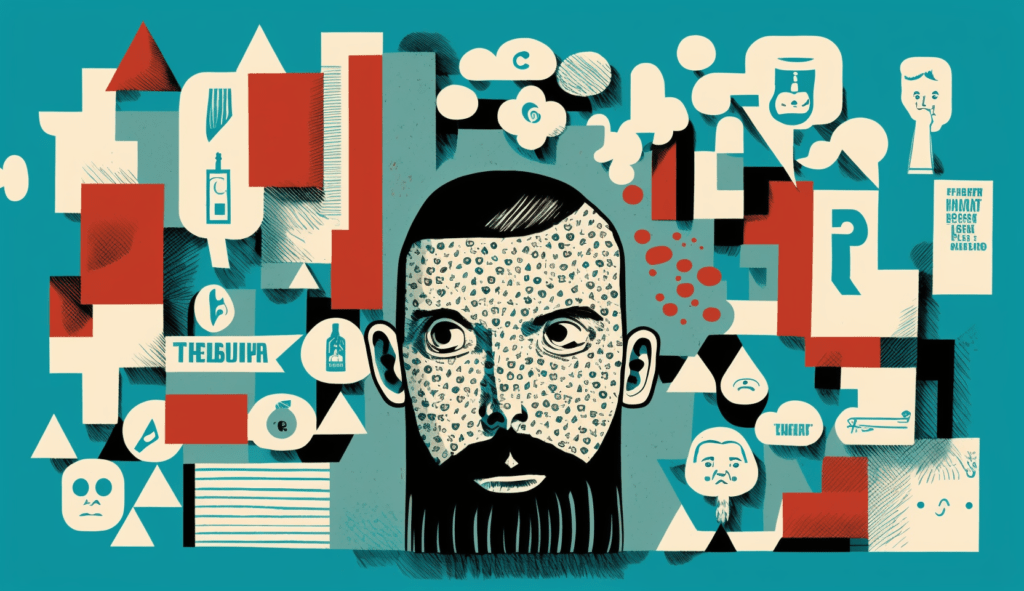The world of marketing is evolving at an unprecedented pace, and artificial intelligence (AI) is at the forefront of this change. Among the various AI-driven technologies, a new player is making waves and revolutionizing how businesses approach their marketing strategies: Meet ChatGPT-4.
As businesses and digital marketing professionals alike continue to explore innovative tools and technologies to make their jobs easier, more efficient, and ultimately more successful, ChatGPT-4 is emerging as a powerful asset. If you thought ChatGPT-3 was a game-changer, wait until you delve into the capabilities of ChatGPT-4.

Understanding ChatGPT-4
ChatGPT-4 is the latest iteration of OpenAI’s groundbreaking language model. It’s like ChatGPT-3’s smarter, more capable sibling, offering significant improvements in its ability to understand and generate human-like text. With its advanced language modeling capabilities, ChatGPT-4 has the potential to transform the way businesses and marketers alike execute their strategies.
How to Use ChatGPT-4 for Marketing
In this comprehensive guide, we’ll explore various ways businesses can leverage ChatGPT-4 for marketing purposes, from content creation and social media management to customer engagement and beyond. We’ll also look at the key differences between ChatGPT-3 and ChatGPT-4, and how these improvements can be harnessed for maximum ROI.

Key Differences between ChatGPT-3 and ChatGPT-4
- Improved language understanding and generation: ChatGPT-4 offers enhanced linguistic finesse, enabling it to understand and generate text in various dialects and respond to emotions expressed in the text more effectively than its predecessor.
- Information synthesis: ChatGPT-4 is adept at answering complex questions by synthesizing information from multiple sources, whereas ChatGPT-3 might struggle to connect the dots.
- Creativity and coherence: While ChatGPT-3 can generate creative content, ChatGPT-4 goes a step further by producing stories, poems, or essays with improved coherence and creativity.
- Complex problem-solving: ChatGPT-4 demonstrates a strong ability to solve complex mathematical and scientific problems beyond the capabilities of ChatGPT-3.
- Programming power: GPT-4’s programming capabilities have taken social media by storm, as it can generate code snippets or debug existing code more efficiently than GPT-3, making it a valuable resource for software developers.
- Image and graphics understanding: Unlike GPT-3, which focuses primarily on text, GPT-4 can analyze and comment on images and graphics.
- Reduction of inappropriate or biased responses: GPT-4 implements mechanisms to minimize undesirable results, thereby increasing reliability and ethical responsibility.

How to Get the Most ROI from Using ChatGPT-4
ChatGPT-4 has numerous enhancements that make it one of the most robust and capable tools on the market. Its significantly larger number of parameters allows it to understand and generate language with an almost human-like fluency. This leads to fewer incorrect responses and more meaningful interactions.
For businesses, this translates into more effective communication, better customer engagement, and a higher conversion rate. By deploying ChatGPT-4 in content creation, for instance, businesses can generate high-quality, targeted content at a fraction of the cost of traditional content creation methods. Similarly, by using ChatGPT-4 powered chatbots, businesses can offer 24/7 customer support, leading to increased customer satisfaction and loyalty.
- Content Creation: ChatGPT-4 can assist with generating high-quality blog posts, social media captions, email newsletters, and more, which can save time and resources for businesses and marketers.
- Social Media Management: Leverage ChatGPT-4 to craft engaging social media posts, respond to comments and messages, and even develop social media strategies.
- Customer Engagement: Utilize ChatGPT-4 to create personalized interactions with customers through chatbots, enhancing customer experience and satisfaction.
- Market Research: ChatGPT-4 can help analyze consumer sentiment, trends, and preferences by processing large volumes of data, providing valuable insights to inform marketing strategies.

How Developers Are Using ChatGPT-4 to Improve Marketing
Developers are harnessing the power of ChatGPT-4 to create tools and platforms that enhance marketing efforts in various ways. For instance, they are developing advanced chatbots that not only answer customer queries but can also provide personalized product recommendations or even upsell and cross-sell products.
Moreover, developers are leveraging ChatGPT-4’s enhanced language generation capabilities to create tools for content creation and curation. For instance, AI-driven content creation platforms can help marketers generate high-quality, SEO-optimized content at scale, thus saving time and resources while improving search rankings.
Developers are also utilizing ChatGPT-4 for social listening and sentiment analysis. By analyzing online conversations and social media posts, businesses can gain insights into customer sentiment towards their brand, products, or services, enabling them to make informed marketing and business decisions.
Real-World Example: A Telecom Company’s Success with ChatGPT-4
Let’s take a look at how a Telecom Company, let’s call them ‘TelecomX’ for disclosure purposes, leveraged ChatGPT-4 to transform their marketing efforts.
TelecomX was looking to enhance their customer service experience and improve their marketing effectiveness. They decided to integrate ChatGPT-4 into their operations in two major ways: customer service chatbots and content creation.
- Customer Service Chatbots: TelecomX used ChatGPT-4 to develop advanced customer service chatbots. These AI-driven bots were capable of handling complex customer queries, providing instant, accurate, and personalized responses. As a result, customer satisfaction rates soared, and the company saw a significant reduction in customer service costs.
- Content Creation: TelecomX also used ChatGPT-4 for content creation. The AI model helped them generate engaging, SEO-friendly blog posts and social media content at scale. This resulted in increased web traffic, improved search rankings, and a higher social media engagement rate.
By integrating ChatGPT-4 into their operations, TelecomX saw a 30% increase in customer satisfaction and a 25% increase in website traffic, directly leading to a surge in their ROI. Their story illustrates the transformative potential of ChatGPT-4 in a business setting, particularly in the realm of marketing.
The tangible benefits of ChatGPT-4 integration were reflected in TelecomX’s cost savings, improved marketing efficiency, and enhanced customer engagement. But the indirect advantages were no less significant. The insights derived from customer interactions with the chatbot allowed TelecomX to better understand their customer needs and preferences. This information was then used to refine their product offerings and tailor their marketing messages, leading to a higher conversion rate and customer retention.
Not to mention, the automated content creation feature of ChatGPT-4 saved the company countless hours that would have otherwise been spent on manual content production, editing, and SEO optimization. This boosted the productivity of their marketing team, allowing them to focus on strategic tasks rather than getting bogged down with content creation.
Leveraging ChatGPT-4: Best Practices and Key Considerations
While the benefits of ChatGPT-4 for marketing are clear, businesses must approach its deployment strategically to optimize its value. First, it’s crucial to clearly define the areas where ChatGPT-4’s capabilities can be most beneficial. Whether it’s automating customer service, enhancing content marketing, or extracting insights from customer data, identifying these areas will guide the integration process.
Training and fine-tuning the model to align with your business needs and goals is another crucial step. While ChatGPT-4 is a powerful tool, it’s not a magic wand. It needs to be trained with the right data and fine-tuned to perform specific tasks. It’s also important to continuously monitor and adjust the model’s performance over time to ensure it remains effective and relevant.
Lastly, it’s essential to address ethical and privacy considerations. Businesses need to ensure they are using ChatGPT-4 in a way that respects customer privacy and complies with relevant regulations.
As we’ve seen, ChatGPT-4 is a powerful tool that can revolutionize marketing strategies, providing a competitive edge in an increasingly digital marketplace. Its advanced language processing capabilities, combined with the ability to perform complex tasks, offer a myriad of applications for businesses and digital marketers alike.
If you found this guide helpful or know someone who might benefit from this information, don’t hesitate to share it. The world of AI is vast and ever-evolving, and by sharing our knowledge, we can all stay ahead of the curve. Embrace the future of marketing with ChatGPT-4, and let’s keep learning, growing, and innovating together.

